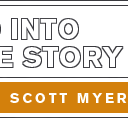Character Type: Addict
Those of you who have followed my blog for some time or taken courses with me through Screenwriting Master Class know how fascinated I am with character archetypes, specifically how there are five — Protagonist, Nemesis, Attractor, Mentor, Trickster — which recur in movies over and over and over.
Some might see archetypes as a sort of reductionist approach to writing when in my experience, it is precisely the opposite.
By working with these five Primary Character Archetypes, we can identify the core narrative function of every key character, then use that knowledge as a guide as we build them out in a limitless number of ways.
One approach is to use an extensive array of Character Types available to us and consider how writers can use them to create unique, compelling figures in our stories.
Today: Addict.
“I do not understand what I do. For what I want to do, I do not do, but what I hate, I do.” The words of Paul in the New Testament (Romans 7:15) weren’t about addiction per se (his focus was on “sin” that could live within a person), but it offers an apt description of the condition.
He goes on to say: “For I have the desire to do what is good, but I cannot carry it out. For I do not do the good I want to do, but the evil I do not want to do — this I keep on doing.”
And this goes to the heart of at least one reason why filmmakers have explored stories with Addict character types: The struggle between self-control and the pull of the addiction. It represents conflict on a fundamental level, powerful physical needs and impulses at war with an inner knowledge, conscious or unconscious, that the character is destroying him or herself.
There are stories about drug addicts such as Drugstore Cowboy, Trainspotting and The Man With the Golden Arm:
There are alcoholics featured in movies such as Days of Wine and Roses, Barfly and Bad Santa:
There are movies about sex addiction like Thanks for Sharing, Don Jon and Shame:
The behavior has an authority over the Addict and its nature is even more insidious because addiction extends beyond activities we might normally associate with abnormality or criminality. Characters can be addicted to work, food, sports, exercise… almost activity has the potential to become an object of obsession.
One iteration of this type movies explore over and over is the character who is addicted to power. At this point, it is almost a given when dealing with superhero, science fiction or fantasy villains, their lust for power a presupposition per their narrative function like Sauron in The Lord of the Rings. They want to be all powerful because… they want to be all powerful.
But there are more nuanced versions of this obsession with power. Consider Charles Foster Kane in Citizen Kane, Colonel Kurtz in Apocalypse Now, or Scar in The Lion King. Their addictions derive from wounds deep within their psyche, their pursuit of power an externalized attempt to heal their inner selves.
Perhaps there is no more comprehensive an Addict type than Tony Montana (Al Pacino) from the 1983 movie Scarface. He is addicted to drugs. He is addicted to power. Addiction with a capitol “A”:
Sometimes Addict stories have happy endings where a character kicks the habit. More often than not, as Tony Montana conveys, the Addict ends up in a state of desolation.
What brainstorming can you do with an Addict character type?
The dark pull of addiction often leads to grim stories, so why not play around with a counter approach? Arthur featured a happy drunk who eventually confronted his Self and made some changes in his life. But the movie was in fact a comedy.
What about an Addict as Mentor? We see that in the 1978 movie Midnight Express with the character Max (John Hurt) who dispenses wisdom to the Protagonist Billy (Brad Davis) between hits of hashish.
Or a Trickster as with Withnail (Richard E. Grant) in the wonderful 1987 comedy Withnail & I.
Look at characters in your stories. Are any of them under the control of an inner impulse or the allure of an outside temptation? If a character seems flat, explore the possibility they have some secret addiction. What might that be? What does it say about who they are and why they are the way they are.
That pull toward doing what “I don’t want to do” is an experience every human being has at one time or another. The universality of that impulse creates an excellent opportunity for creating a bond between a script reader and an Addict character.
What other Addict character types can you think of in movies? Why do you think they make for such compelling figures?
Tomorrow: Another character type.
For more articles in the Character Type series, go her.
